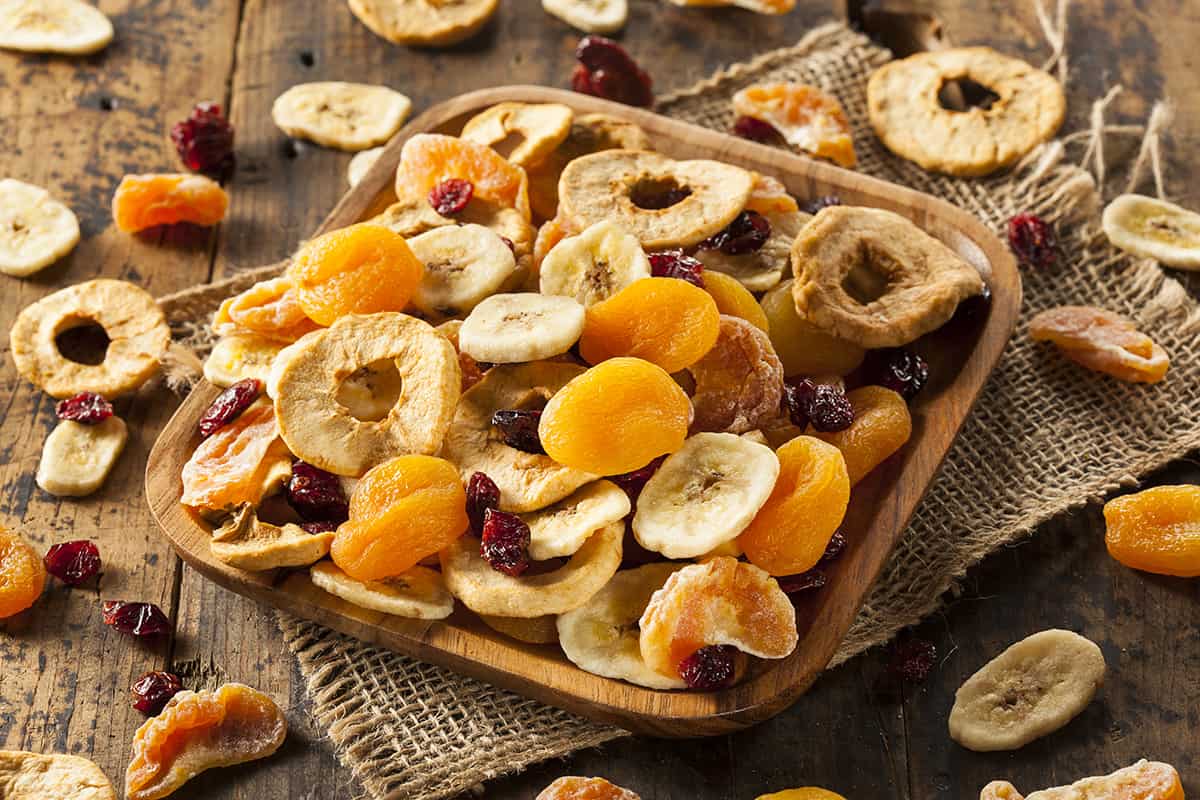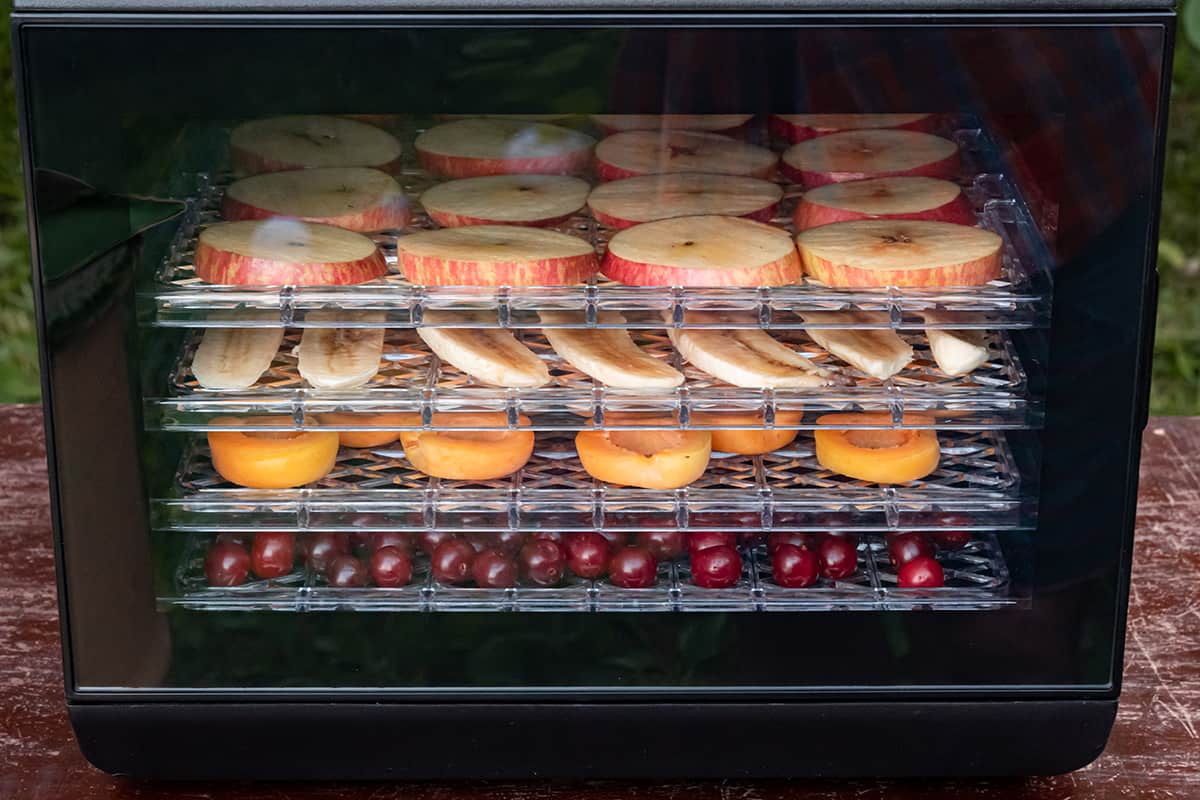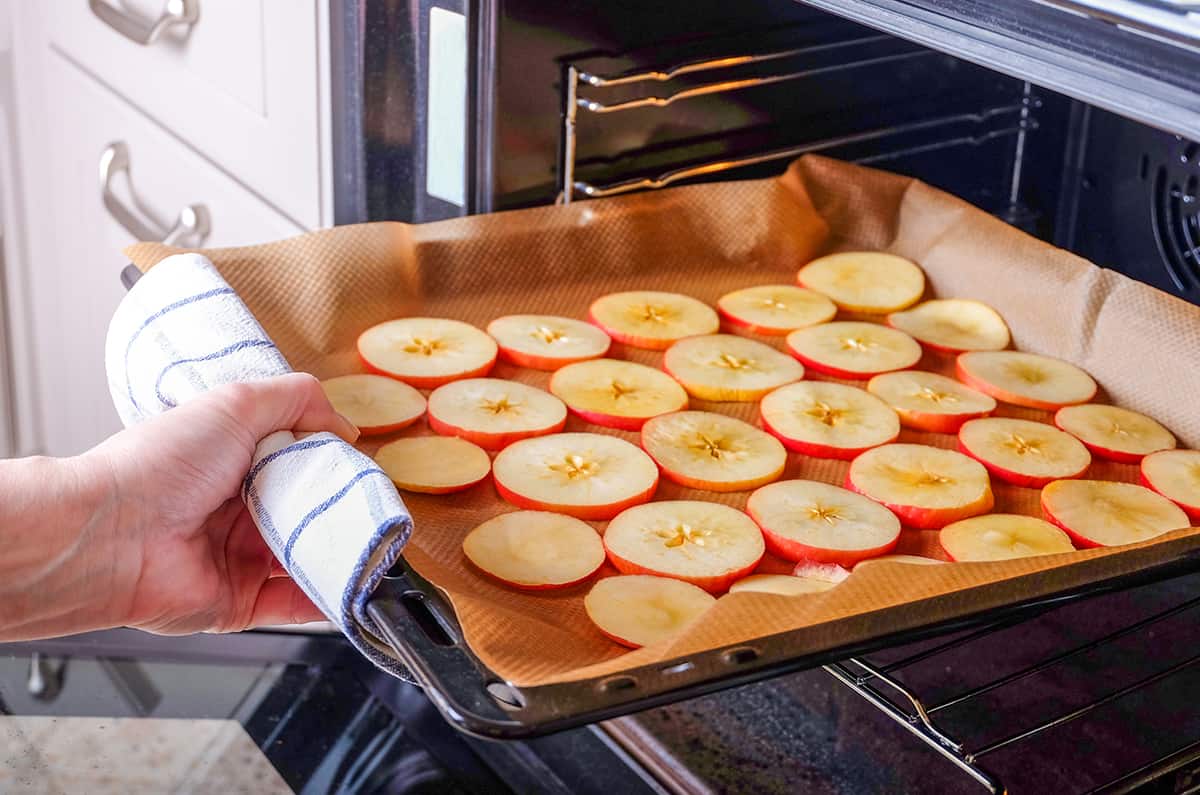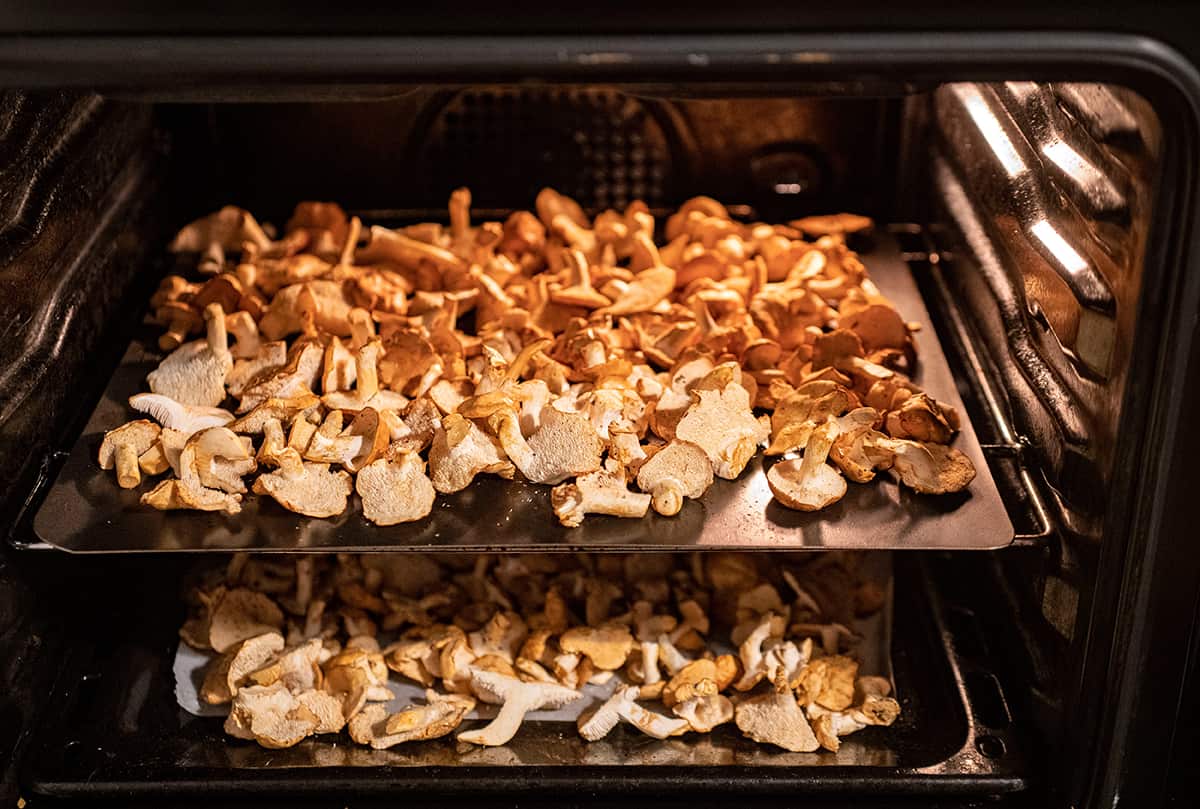If you’re interested in dehydrating foods without an actual dehydrator appliance then you’ll be pleased to know that other common appliances can double up as dehydrators.
Regular ovens can be used to dehydrate food, and if you have a toaster oven you could also use this in place of a dehydrator.
Here we explain how to use an oven to dehydrate various types of food and look at tips to help even newcomers to dehydrate foods achieve success.
What is Food Dehydration?

Dehydrating food is a method of food preservation that’s been around for a long time, with early civilizations using the sun to dry out food to preserve it. It involves removing the moisture from the food so that it won’t go moldy, and this also inhibits the growth of bacteria and harmful pathogens.
Dehydrating food is also known as drying food, and it’s great for increasing the shelf life of fresh foods, as well as changing their texture or concentrating their flavor.
Why Dehydrate Food?
The main reason for dehydrating food is to preserve it, but dehydrating food can also offer a number of other benefits.
Preservation
People who have grown up on a farm, or in a rural area where they grow their own produce, will probably be familiar with dehydrating food. The process of dehydrating foods means that foods can be preserved, lasting for much longer than if they are kept fresh. One benefit of this is that it means you have access to certain foods throughout the year, as opposed to just during the months when they are in season.
For example, blueberries are usually in season from June through to September, depending on which variety you are growing and your local climate. If you dehydrate some of your blueberry harvests, you will have access to dried blueberries all through the year, rather than just in the summer months.
The dried blueberries could be added to granola for a fruity cereal mix, or baked into muffins. Another benefit of preserving foods through dehydration is that it means there will be less waste. If you have a number of apple trees in your yard that all ripen around the same time, chances are that the apples will go bad before you have had the chance to eat them all. However, if you dehydrate the apples, you can keep them in the pantry for many months to come, instead of having to throw them out.
Alter the texture
Dehydrating foods will obviously alter the texture because instead of being moist and juicy, the resulting foods will be dry and shriveled. The type of food you are dehydrating will affect the texture you end up with. Dehydrated plums will typically be slightly chewy, while dehydrated apples will usually be crispy. By altering the texture of the food you are adding more variety to the ingredients in your kitchen, and creating new uses for foods.
Strengthen the flavor
When some foods are dehydrated, their flavor is intensified. This is certainly the case for herbs, along with many types of fruits. By removing the water content of the food, the flavor becomes concentrated, which makes it taste stronger.
This can mean you get a different type of flavor from your dehydrated foods, and it can also mean the food goes further. For example, if a recipe calls for a handful of fresh oregano, you will probably only need a small teaspoon of dehydrated oregano.
Using an Oven for Dehydrating Food

If you frequently dehydrate food then it may be worth buying a specific dehydrator for this purpose. However, these bulky items can take up a lot of space in the kitchen, and they can also be quite expensive.
If you don’t plan on dehydrating food very often, then it makes more sense to use an appliance you already have to dehydrate your food. Ovens work well for this, as do toaster ovens.
When using your oven as a dehydrator, you’ll want to set the temperature to a very low setting. Ideally, somewhere between 120°F/49°C and 140°F/60°C works well for dehydrating most foods, but generally speaking, any temperature lower than 200°F/93°C can be used. Many ovens will not provide temperature settings lower than 200°F/93°C, because food is rarely cooked at these levels.
If your oven doesn’t give you any specific temperature options beneath 200°F/93°C, you can set your oven to ‘warm’ instead. Once you have selected a temperature, you can insert your baking tray of sliced foods and wait for the magic to happen. The length of time the food needs to spend in the oven will depend on how much water content it had to start with.
Foods that are naturally lower in water will take less time, while juicy food items will take longer. You can expect most foods to have fully dehydrated within 6 to 10 hours in the oven.
Tips for Dehydrating in the Oven

Use parchment paper
To dehydrate foods in the oven you’ll need to set them out on a baking tray. It’s a good idea to set a piece of parchment paper on the baking tray before adding your foods, because this will prevent the foods from sticking to the baking tray, making it much easier to scrape them off once they are ready.
Slice evenly
In order for your food to all dehydrates to the same extent, you should slice food up evenly. Slices that are a quarter inch thick work best for most foods. If your slicing skills are not the best, you can use a mandolin which will give you more uniform slices. If your slices aren’t evenly sized, then some are going to end up burnt, while others may not be fully dehydrated.
Be patient
Dehydrating is not a quick process, but the results it yields are worth the wait. Don’t be tempted to increase the temperature of the oven to speed the drying along, because this will cook your foods instead of dehydrating them.
The main drawback of using an oven as a dehydrator is it means that your oven will be out of action for many hours. If you plan to dehydrate foods in the oven, plan to do it on a day when you don’t need to cook anything in the oven.
Use space
Slices of food should be spaced out evenly on a baking tray so that the warm air can circulate properly around them. Spacing the food too close together will make it take longer to dehydrate.
Flip food
Every few hours you should take your baking tray out of the oven and flip the slices. This will ensure they get evenly dehydrated on both sides. If your oven has hot spots, rotate the baking tray occasionally so that all of the food gets dried consistently.
Keep check
You don’t need to keep a constant eye on food dehydrating in the oven, but you should check on it regularly, especially when it’s been in for a few hours already. You will know the food is ready when it has completely dried out. If it shows any signs of feeling sticky or tacky, it needs to spend longer in the oven.






